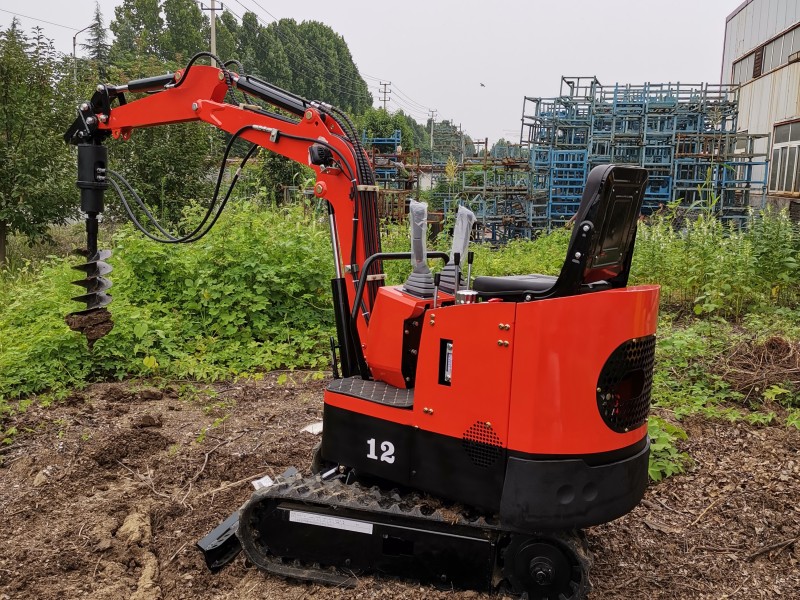With the rapid development of the construction machinery industry,small excavators have gradually been widely used due to their flexibility,ease of operation and ability to adapt to a variety of complex working conditions.Small excavators can be seen everywhere in agriculture,garden construction,municipal engineering and small construction sites.When choosing a small excavator,size is often the focus of people's attention.The size standard of a small excavator not only affects its operating efficiency,but is also directly related to its adaptability in different sites.So,what is the size standard of a small excavator?
When it comes to the size standard of a small excavator,you may first think of the size of the machine.After all,the reason why a small excavator is called"small"is because of its small size and ability to operate flexibly in a small space.Compared with large excavators,the size of a small excavator usually ranges from a few tons to dozens of tons,with a length generally between 2.5 meters and 5 meters,a width between 1 meter and 2 meters,and a height basically controlled within 3 meters.Such a compact size makes small excavators particularly flexible when operating in narrow alleys,basements,buildings and other sites.
Of course,the size standards of small excavators are not only reflected in the external dimensions of the machine,but also include other important parameters,such as digging depth,unloading height and operating radius.These size standards determine the performance of small excavators in actual operations.For example,a small excavator with a digging depth of 2 meters is obviously more handy when dealing with tasks such as trenching and pipe laying.The unloading height directly affects the excavator's ability to unload earth or materials onto a truck.The operating radius affects the excavator's operating range and determines whether it can complete larger tasks in a small venue.
Therefore,when choosing a small excavator,the consideration of size standards is crucial.You need to choose a small excavator of the right size according to the specific working conditions and work requirements.If you need to perform delicate operations in a small space,obviously a smaller external size and a more flexible operating radius are the best choices;if you need to handle deeper excavation tasks or need to load materials onto a higher truck,then the digging depth and unloading height become your focus.
In addition,the size standards of small excavators are not static.With the development of science and technology,more and more manufacturers have begun to introduce retractable crawlers,adjustable arms and other designs on small excavators,making small excavators more flexible in size.For example,the crawler width of some small excavators can be adjusted according to the working conditions.When it is necessary to pass through narrow alleys,the crawler can be retracted to a smaller size,and on a spacious work site,the crawler can be expanded to the maximum size to enhance the stability of the machine.Such a design undoubtedly greatly improves the adaptability of small excavators.
In actual operations,different working conditions have different requirements for the size standards of small excavators.Taking municipal engineering as an example,many municipal engineering projects involve road construction and maintenance.Such projects often require small excavators to have smaller dimensions to facilitate operations in places with limited space such as urban streets and narrow alleys.At the same time,municipal engineering also has certain requirements for the excavation depth and unloading height of excavators,especially when laying and maintaining underground pipelines,the excavation depth is particularly important.
With the development of modern agriculture,more and more farmers and landscape designers have begun to use small excavators for land preparation,tree transplantation and other tasks.In these scenarios,the flexibility and precision of small excavators are its biggest advantages.Moreover,since the terrain in farmland and gardens is usually complex,the size standard of small excavators also needs to consider their passability and climbing ability.Generally speaking,choosing a small excavator with a more compact size and strong climbing ability will be more suitable for working in such complex terrain.
In general,the size standard of small excavators is crucial for the selection and application of equipment.You not only need to choose the appropriate external dimensions according to your work needs,but also fully consider parameters such as digging depth,unloading height,and operating radius.These standards determine the actual working effect of the small excavator and also affect its service life and maintenance cost.Especially in modern engineering,different working environments and needs are becoming increasingly diversified,and the size standard of small excavators is even more important.Therefore,when purchasing a small excavator,it is recommended that you must make multiple comparisons based on the specific working conditions and choose the equipment that best suits your needs in order to give full play to the advantages of small excavators.
